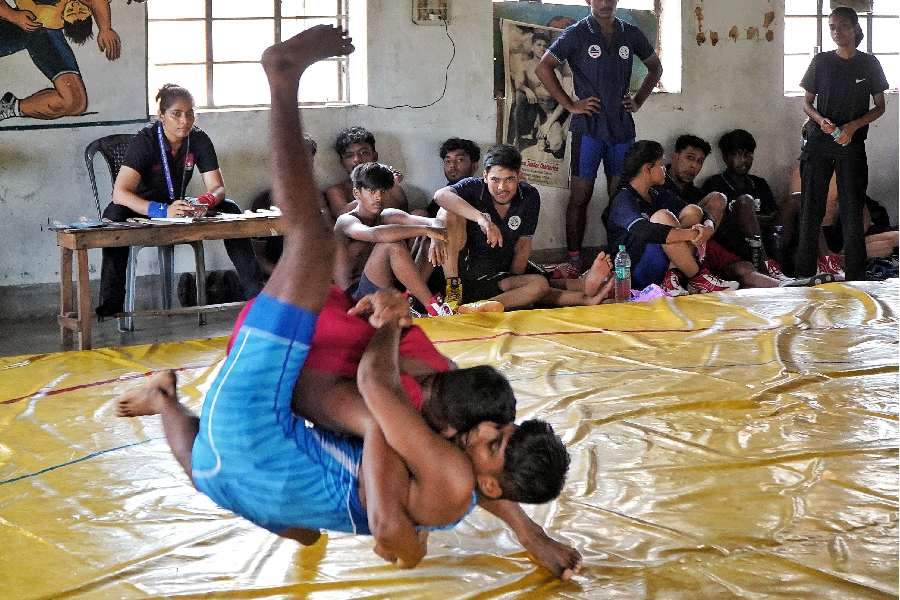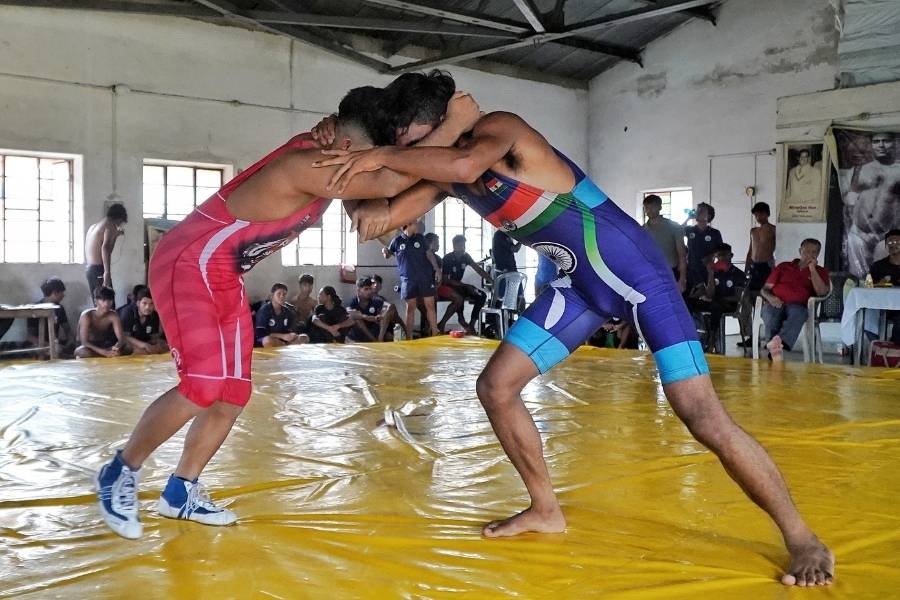What’s common between Rabindranath Tagore, Swami Vivekananda and Sarat Chandra Chattopadhyay besides their Bengali roots? All three of them wrestled in the akharas during their teenage days — this, perhaps, is evidence to Bengal’s rich culture of kushti, a sport now dominated by Punjab and Haryana.
In 2025, Bengal’s wrestling pits have gone quiet. The akharas where champions grappled with Olympic dreams in their eyes, now slumber. But amid the apathy there is a hope for a comeback.
Jorabagan Park — A legacy covered in dust
In the heart of old Kolkata lies a patch of land many walk past without a second glance. But in the 20th century, this ground — Jorabagan Park — was a holy turf for Indian wrestling. It is even believed that KD Jadhav, India’s first wrestler to win an Olympic medal, trained here during his formative years. This association alone should make the ground a protected sporting monument. Instead, it's barely acknowledged.
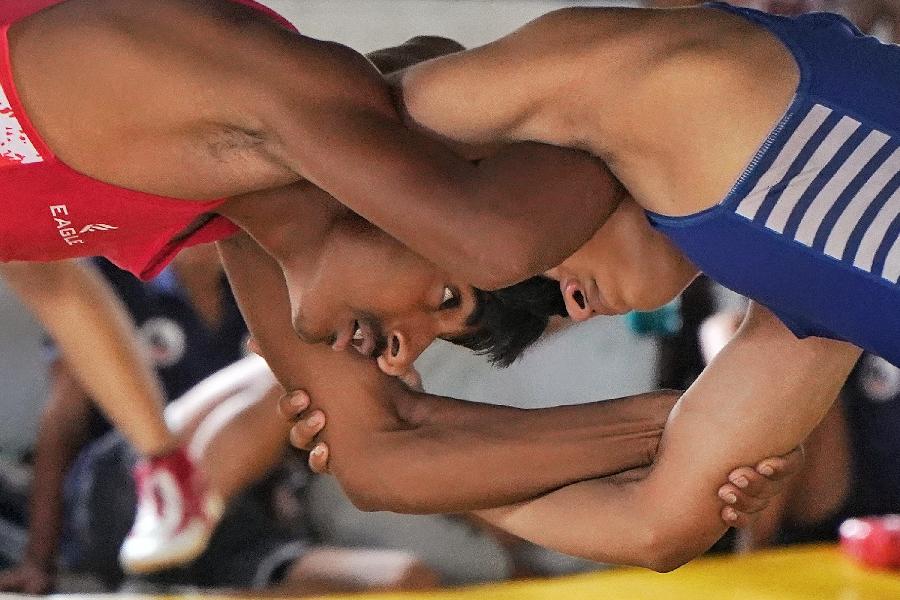
Two youngsters go head to head during a State tournament
When Bengal ruled the wrestling ring
The story of Bengal's wrestling began in 1881, when Nihar Chandra Saha started an akhara in North Kolkata. What began as a humble effort by a family with deep wrestling roots evolved into a cradle of champions. His descendants, including Nandlal Saha, trained dozens of young men who went on to earn national and international accolades.
Through the mid-20th century, Bengal was a wrestling powerhouse. Wrestlers from the state routinely made it to national camps. Men like Jal Anand Singh, Jogeshwar Singh, and Niranjan Das were not just elite athletes; they were local legends. In 1957, Sudhir Chandra Saha became India’s first internationally certified wrestling judge in Paris during the first ever referee examination.
Wrestling in Bengal was stitched into the social fabric, passed from father to son, like religion.
The decline: A tale of institutionalized apathy
By the 1980s, the golden age of wrestling in Bengal had started to rust. The decline wasn’t gradual — it was abrupt, triggered by systemic neglect and cultural shifts. Once flourishing akharas began to close down due to a lack of funds, coaching staff, and infrastructural support. Families that once encouraged wrestling began urging children to pursue “safer”, salaried careers.
Asit Kumar Saha, the vice president of the Wrestling Federation of India, believes this loss wasn’t accidental—it was institutional. “Wrestling needs bare minimums—soil, time, and sacrifice. But none of that is prioritised anymore. Parents ask, ‘Will my child get a job if they wrestle?’ That question didn’t exist 40 years ago.”
The emergence of cricket, televised sports, and western fitness models also eroded wrestling's cultural dominance, says Saha. The new heroes wore jerseys, not langots.
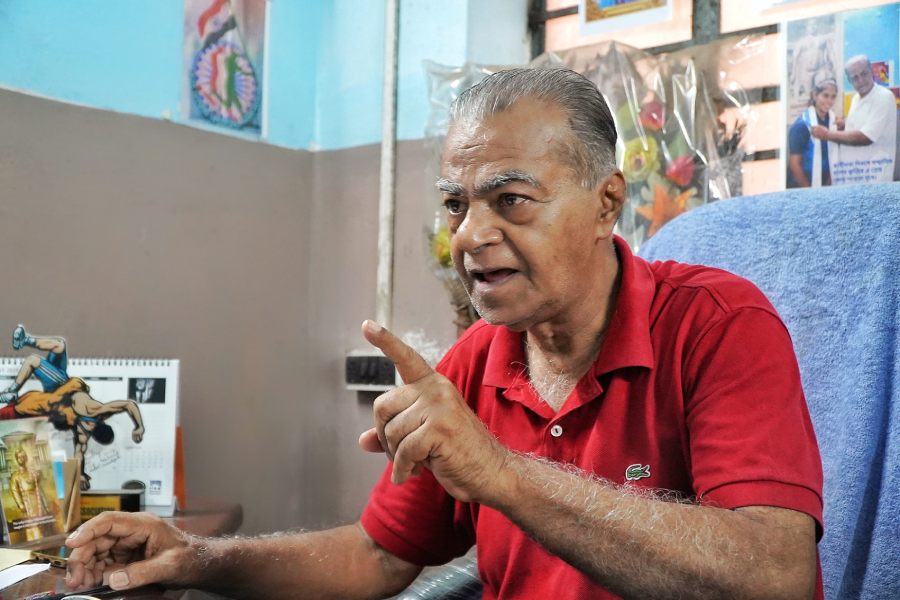
Five generations of Asit Kumar Saha’s family have backed wrestlers in West Bengal
Why Bengal lost ground to the North
The contrast with northern India is glaring. In Haryana, Punjab, and parts of Uttar Pradesh, wrestling continues to thrive under state-supported ecosystems. Akharas are subsidised. Wrestlers receive government jobs, scholarships, and regular competitions. Local governing bodies organise school-level tournaments, with clear pathways to national selection.
“In Bengal, we’re grateful if someone donates a mat,” says Saha. There are no district scouting programmes. No free medical camps. No structured nutrition support. No incentives for students to continue post their teenage years.
Today, a wrestler from Purulia or Murshidabad might have as much fire as someone from Hisar, but without fuel, fire dies. The neglect is not just bureaucratic—it’s generational, laments Saha.
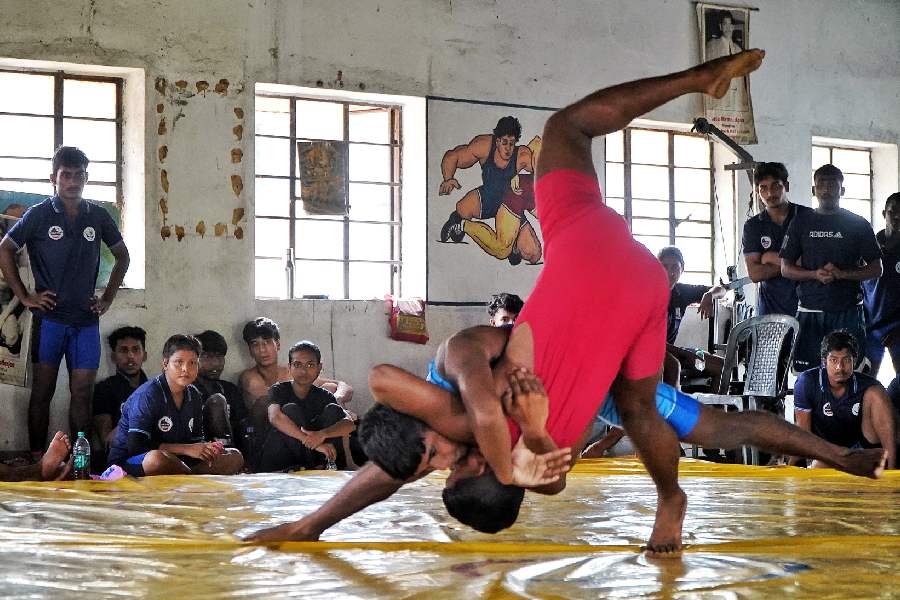
Bengal's wrestlers have a fire within, waiting to be fueled
When wrestlers were monks: The lost culture
The Tagore family residence had its own Akhara at a point in time when almost every household in Bengal encouraged kids to hit the wrestling pits.
“In our time, wrestling wasn’t a sport. It was an ascetic practice,” Saha says. “We trained like monks, lived like sadhus.”
Wrestlers were revered for their discipline and celibacy. Their lives revolved around dawn practice, minimal food (not portion but items eaten), silence, and spiritual introspection. The akhara wasn’t just a gym—it was a sanctuary. Influenced by thinkers like Rishi Aurobindo, many considered wrestling a path to personal enlightenment.
“It was military-grade conditioning—without ego,” Saha adds. “Now kids want mirrors and machines.”
Grappling for pride: A ray of hope
Though diminished, Bengal’s wrestling spirit flickers in quiet corners. In Murshidabad, a young coach, Agniban Sen, runs The Combative Guru, training nearly 80 boys. With no institutional funding, he relies on discipline, local support, and pure passion.
“Our sessions run seven days a week, with two-hour shifts,” he says. “We tailor diets, monitor injuries, and track off-season conditioning—all from personal funds.”
There are similar setups in Nadia, Bankura, and North 24 Parganas, where coaches have converted terraces and backyards into makeshift akharas. But these efforts, while noble, are fragile — one financial hit, and they collapse.
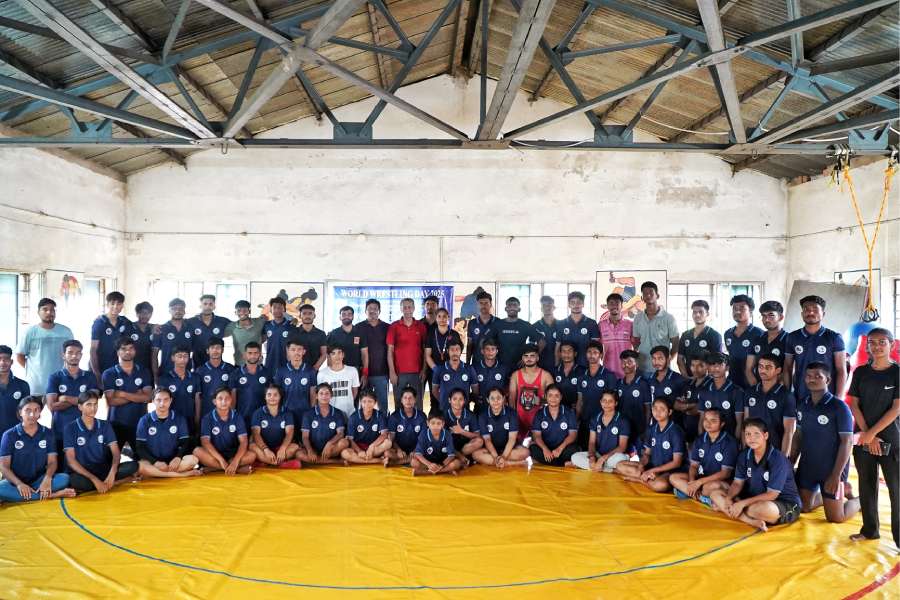
At least 100 wrestlers from Bengal participated in a state tournament at Panchanan Bayam Samity in Kolkata
What Bengal needs to reclaim its throne
Saha proposes the creation of five regional training hubs across Bengal to revive the wrestling culture. Each would house 25 male and female wrestlers, selected through district trials. He recommends stipends, quality mats, dietary guidance, and access to physiotherapy for the budding wrestlers.
“Even if you don’t aim for Olympic medals immediately, you’ll create a sustainable culture,” he says. “Let wrestling live among the people—not buried in government files.”
Despite having an association, Bengal’s wrestlers do not have access to stadiums like the Netaji Indoor or the Vivekananda Yuba Bharati Krirangan.
The cost of neglect: A cultural crisis
Wrestling doesn’t just build muscle — it builds resilience. In a world grappling with rising violence and social instability, wrestling could be one of the few tools of social upliftment, according to Saha.
“Let a girl train for six months,” he says, “and she’ll never fear a crowded street again.” Wrestling offers dignity, self-respect, and strength—values that no classroom can teach.
The dreams of a Gen-Z wrestler
Priyanka Sarkar, a 20-year-old wrestler from Nadia, took up the sport just two years ago. She used to play Kabaddi before she realised that wrestling was her calling.
“For training I stay in Kolkata at the Jorabagan Panchanan Bayam Samity. My coaches help me with accommodation and training,” she said.
Priyanka has been to national-level contests thrice — once in Haryana, then Karnataka, and recently in Rajasthan. “I have a very good coach and so do the girls from other states. I’m not sure about facilities but maybe because I have only been in the sport for two years they are better than me.”
Priyanka’s dream? “I want to win at the national and international level and the Olympics as well. But for now, it’s one step at a time, so first is nationals.”
Priyanka’s idols are Vinesh Phogat and her coach Shweta Dubey.
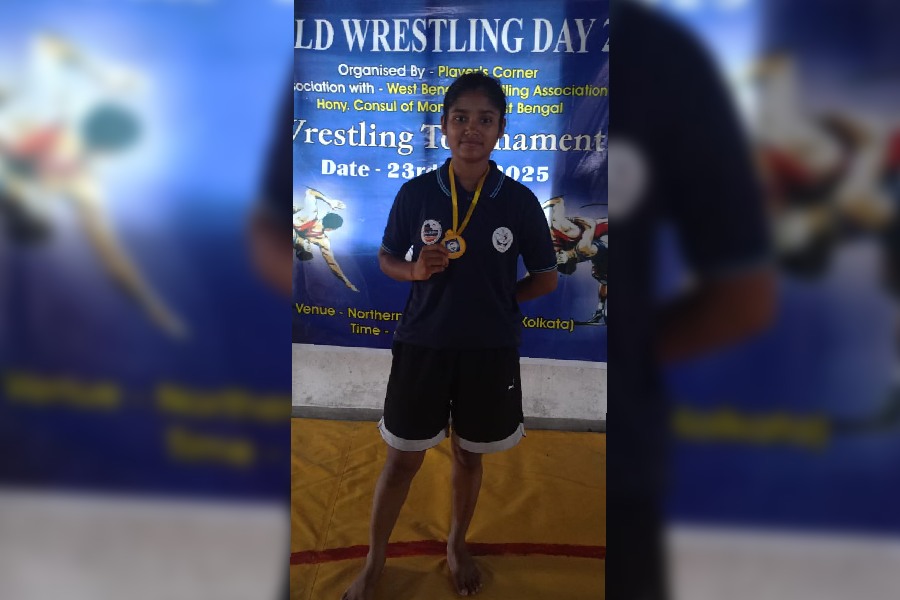
Priyanka Sarkar poses with her medal at a state-level wrestling tournament
An appeal to save wrestling
Asit Kumar Saha doesn’t mince words. “If Bengal lets wrestling die, it will lose more than a sport. It will lose its spine.”
Wrestling gave India its first Olympic medal. It still contributes the most medals at the Games. And yet, in Bengal, it remains underfunded, unsupported, and undervalued.
The soil that trained KD Jadhav is still here. The willpower that shaped Nandlal Saha still exists. What’s missing is commitment—from the state and from society.
